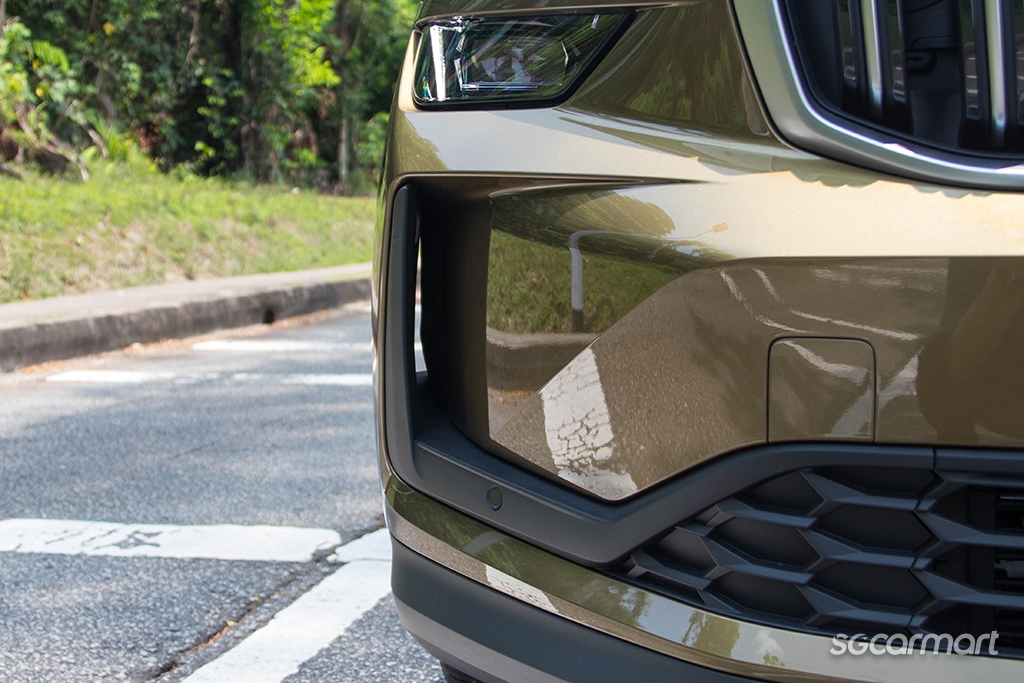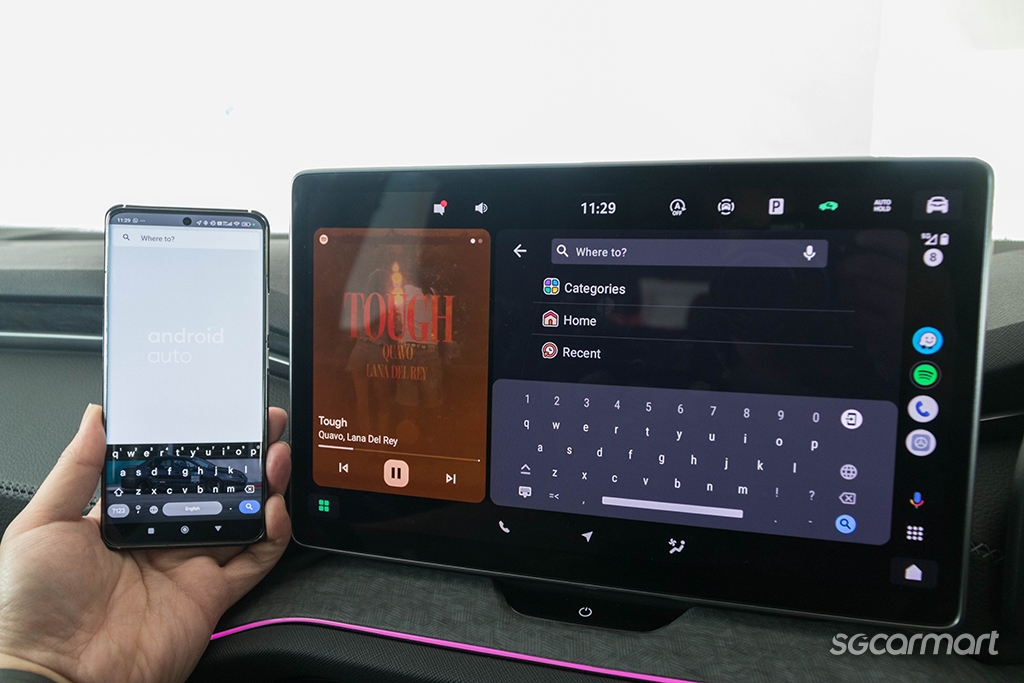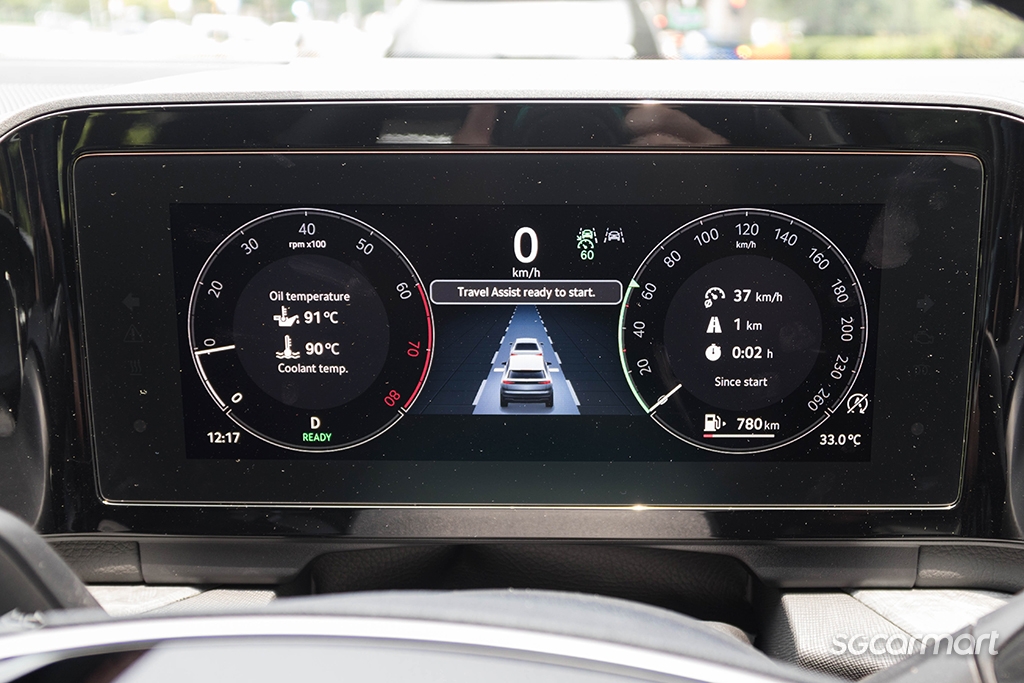Skoda Kodiaq Selection Review
09 Sep 2024|23,570 views
What We Like
Easy drive despite being a big car
Quick steering and adequate brakes
Cargo space significantly increased
Full suite of driver assist systems
Well-equipped
We love the Smart Dials
What We Dislike
Lacklustre acceleration
Fuel economy could be better
Yes, what you are looking at is the new Skoda Kodiaq. While those not too familiar with the car might mistake it for a facelift or even the outgoing model due to its familiar face, this is a completely new car built on the MQB Evo platform.
I won't blame you if you still aren't convinced that it's completely new - there are indeed cars that masquerade as all-new with just a new face... Well, the Kodiaq isn't one of those! Let's take a closer look and you'll see.
Familiar but far from unchanged
You've probably seen many Skoda Kodiaqs on the road - it is the third-best selling Skoda in the world after all. So, we are all familiar with its iconic split headlamps design, and that's where the confusion might arise as the new Kodiaq has generally retained its signature face.
The new LED Matrix beam head lights are high-tech units that ensure a clear view without blinding other drivers
However, it is now equipped with Skoda's new LED Matrix beam head lights as standard. With cutting-edge technology including the Matrix Beam module with 36 pixels, this set of head lights will ensure a clear view ahead without blinding oncoming traffic.
The redesigned grille now features a horizontal light strip broken up by vertical slats; the front bumper also has a pair of functional side vents
The large octagonal grille has also been redesigned, and it now features a horizontal light strip broken up by the slats to create a one-of-a-kind light signature resembling a dotted line connecting the head lights. The new front bumper also has a pair of functional side vents flanking a wide honeycomb air intake in the centre.
A sculpted body connects the front to a rear-end that features a pair of striking 3D Crystalline taillights
Connecting the front-end to the rear, which features a pair of striking 3D Crystalline taillights, is a sculpted body that is longer than before - the Kodiaq has grown by 61mm in length, all of which has been allocated to the rear-end, bumping boot space up by a significant 70 litres.
Hop inside and all doubts about the car disappear. The entire interior - the dashboard, the air-con vents, the knobs, and the large displays are all new in this Kodiaq.
The large 13.0-inch infotainment system has a fresh new user-friendly interface, along with wireless Android Auto and Apple CarPlay
Stealing the limelight is the new 13-inch infotainment system powered by a fresh new interface designed with user experience in mind. While reminiscent of the infotainment system in the Enyaq RS that I've reviewed recently, the Kodiaq's comes with wireless Android Auto and Apple CarPlay, it also has physical knobs for climate control adjustments.
The Kodiaq is equipped with a set of smart dials - these physical knobs have a display in the middle, and could be toggled between various functions with a quick press
The tactile touch of physical knobs and buttons are still preferred for many, and in the case of the Kodiaq, Skoda has managed to reinvent the knob. The three knobs situated right below the central air-con vents are smart dials with integrated digital displays, you can toggle them between various functions with a quick press on the centre of the dial and adjust them by rotating the knob surrounding the display.
Although electrical seat adjustment is a luxury that's limited to the driver, this seven-seater features adjustable second-row seats that allows legroom and cargo space to be configured according to the occupants' needs. Thanks to the increase in length, the Kodiaq now offers 340 litres of boot space with all seats up. Boot space expands to 845 litres with the third row folded and to a maximum of 2,035 litres with all seats folded.
As expected of Skoda, the Kodiaq is also filled with clever touches such as the dual wireless charging tray, along with lots of cubbyholes and storage space within the car.
The Kodiaq is a rather big seven-seater SUV - granted, the third row isn't the best for adults - but the front and second row is spacious with a good amount of leg and headroom. The best part of all, is that despite its size, the Kodiaq is easy to place on the road. Manoeuvring through multi-storey carparks isn't excessively daunting and when on the roads, you won't feel like you are driving something that's severely oversized.
The Kodiaq is after all a rather weighty car, even with a 1.5-litre TSI engine that produces 148bhp and 250Nm of torque, it's acceleration feels rather lethargic
That said, despite being powered by an updated 1.5-litre four-cylinder turbocharged TSI engine that produces 148bhp and 250Nm of torque, the car's acceleration feels rather lethargic - it's probably due to the weight of the car. However, coupled with a quick steering and adequate brakes for a car of its size, the Kodiaq still manages an easy, albeit a little uninspiring, drive. As the Kodiaq was fresh off the showroom floor and hasn't been run-in yet, the fuel economy figure that I had managed to achieve (just below 10km/L) fell short of the official figure. An RS variant would probably satisfy the requirements of drivers who are seeking a more dynamic drive but it could potentially be quite the gas guzzler as well.
However, despite its size, the Kodiaq manages an easy drive; its Travel Assist function is also extremely useful for traffic jams and expressway driving
Adding to the ease of driving is the Travel Assist function, an extension of the typical Adaptive Cruise Control with Lane Centering assistance, the Kodiaq is able to come to a complete stop and move off autonomously while following the car in front of it. Having been stuck in massive traffic jams across the border, I know I'll appreciate this feature.
The Kodiaq that everyone loves, but newer and better!
Despite appearing very similar to its predecessor at the first glance, this is indeed a significantly improved model that took all that made the original Kodiaq so popular a step further.
While my main gripe would be its lacklustre engine performance, this is after all, not the performance variant. What it offers instead, is an easy, well-assisted drive with space for seven or five in comfort along with plenty of cargo space, which really is what most drivers are looking for when browsing cars in this segment.
In the market for an SUV? Here are some others that you might be interested in:
The Zeekr X is a compelling new offering to consider
The Hyundai Santa Fe gets a big and bold new exterior
The new Volkswagen Tiguan comes with a wide suite of features
What We Like
Easy drive despite being a big car
Quick steering and adequate brakes
Cargo space significantly increased
Full suite of driver assist systems
Well-equipped
We love the Smart Dials
What We Dislike
Lacklustre acceleration
Fuel economy could be better
Yes, what you are looking at is the new Skoda Kodiaq. While those not too familiar with the car might mistake it for a facelift or even the outgoing model due to its familiar face, this is a completely new car built on the MQB Evo platform.
I won't blame you if you still aren't convinced that it's completely new - there are indeed cars that masquerade as all-new with just a new face... Well, the Kodiaq isn't one of those! Let's take a closer look and you'll see.
Familiar but far from unchanged
You've probably seen many Skoda Kodiaqs on the road - it is the third-best selling Skoda in the world after all. So, we are all familiar with its iconic split headlamps design, and that's where the confusion might arise as the new Kodiaq has generally retained its signature face.
The new LED Matrix beam head lights are high-tech units that ensure a clear view without blinding other drivers
However, it is now equipped with Skoda's new LED Matrix beam head lights as standard. With cutting-edge technology including the Matrix Beam module with 36 pixels, this set of head lights will ensure a clear view ahead without blinding oncoming traffic.
The redesigned grille now features a horizontal light strip broken up by vertical slats; the front bumper also has a pair of functional side vents
The large octagonal grille has also been redesigned, and it now features a horizontal light strip broken up by the slats to create a one-of-a-kind light signature resembling a dotted line connecting the head lights. The new front bumper also has a pair of functional side vents flanking a wide honeycomb air intake in the centre.
A sculpted body connects the front to a rear-end that features a pair of striking 3D Crystalline taillights
Connecting the front-end to the rear, which features a pair of striking 3D Crystalline taillights, is a sculpted body that is longer than before - the Kodiaq has grown by 61mm in length, all of which has been allocated to the rear-end, bumping boot space up by a significant 70 litres.
Hop inside and all doubts about the car disappear. The entire interior - the dashboard, the air-con vents, the knobs, and the large displays are all new in this Kodiaq.
The large 13.0-inch infotainment system has a fresh new user-friendly interface, along with wireless Android Auto and Apple CarPlay
Stealing the limelight is the new 13-inch infotainment system powered by a fresh new interface designed with user experience in mind. While reminiscent of the infotainment system in the Enyaq RS that I've reviewed recently, the Kodiaq's comes with wireless Android Auto and Apple CarPlay, it also has physical knobs for climate control adjustments.
The Kodiaq is equipped with a set of smart dials - these physical knobs have a display in the middle, and could be toggled between various functions with a quick press
The tactile touch of physical knobs and buttons are still preferred for many, and in the case of the Kodiaq, Skoda has managed to reinvent the knob. The three knobs situated right below the central air-con vents are smart dials with integrated digital displays, you can toggle them between various functions with a quick press on the centre of the dial and adjust them by rotating the knob surrounding the display.
Although electrical seat adjustment is a luxury that's limited to the driver, this seven-seater features adjustable second-row seats that allows legroom and cargo space to be configured according to the occupants' needs. Thanks to the increase in length, the Kodiaq now offers 340 litres of boot space with all seats up. Boot space expands to 845 litres with the third row folded and to a maximum of 2,035 litres with all seats folded.
As expected of Skoda, the Kodiaq is also filled with clever touches such as the dual wireless charging tray, along with lots of cubbyholes and storage space within the car.
The Kodiaq is a rather big seven-seater SUV - granted, the third row isn't the best for adults - but the front and second row is spacious with a good amount of leg and headroom. The best part of all, is that despite its size, the Kodiaq is easy to place on the road. Manoeuvring through multi-storey carparks isn't excessively daunting and when on the roads, you won't feel like you are driving something that's severely oversized.
The Kodiaq is after all a rather weighty car, even with a 1.5-litre TSI engine that produces 148bhp and 250Nm of torque, it's acceleration feels rather lethargic
That said, despite being powered by an updated 1.5-litre four-cylinder turbocharged TSI engine that produces 148bhp and 250Nm of torque, the car's acceleration feels rather lethargic - it's probably due to the weight of the car. However, coupled with a quick steering and adequate brakes for a car of its size, the Kodiaq still manages an easy, albeit a little uninspiring, drive. As the Kodiaq was fresh off the showroom floor and hasn't been run-in yet, the fuel economy figure that I had managed to achieve (just below 10km/L) fell short of the official figure. An RS variant would probably satisfy the requirements of drivers who are seeking a more dynamic drive but it could potentially be quite the gas guzzler as well.
However, despite its size, the Kodiaq manages an easy drive; its Travel Assist function is also extremely useful for traffic jams and expressway driving
Adding to the ease of driving is the Travel Assist function, an extension of the typical Adaptive Cruise Control with Lane Centering assistance, the Kodiaq is able to come to a complete stop and move off autonomously while following the car in front of it. Having been stuck in massive traffic jams across the border, I know I'll appreciate this feature.
The Kodiaq that everyone loves, but newer and better!
Despite appearing very similar to its predecessor at the first glance, this is indeed a significantly improved model that took all that made the original Kodiaq so popular a step further.
While my main gripe would be its lacklustre engine performance, this is after all, not the performance variant. What it offers instead, is an easy, well-assisted drive with space for seven or five in comfort along with plenty of cargo space, which really is what most drivers are looking for when browsing cars in this segment.
In the market for an SUV? Here are some others that you might be interested in:
The Zeekr X is a compelling new offering to consider
The Hyundai Santa Fe gets a big and bold new exterior
The new Volkswagen Tiguan comes with a wide suite of features
Car Information
Skoda Kodiaq Mild Hybrid 1.5 TSI Selection 7-Seater (A)
$238,900
CAT B|Petrol-Electric|15.2km/L
Horsepower
110kW (148 bhp)
Torque
250 Nm
Acceleration
9.9sec (0-100km /hr)
Thank You For Your Subscription.
- Familiar But New Looks
- A Well Equipped New Interior
- Easy Driving
- The Kodiaq You Love But Even Better













































































































